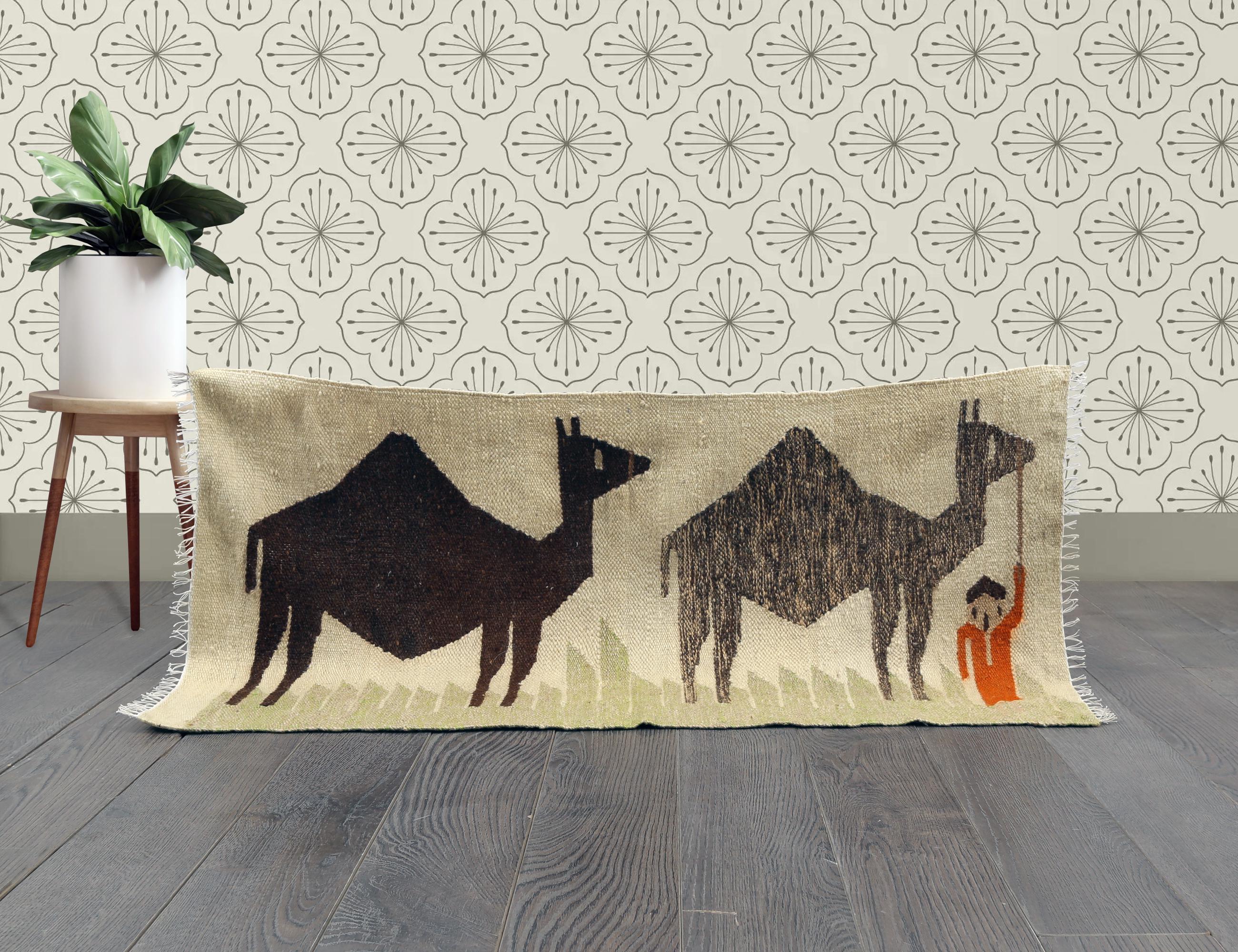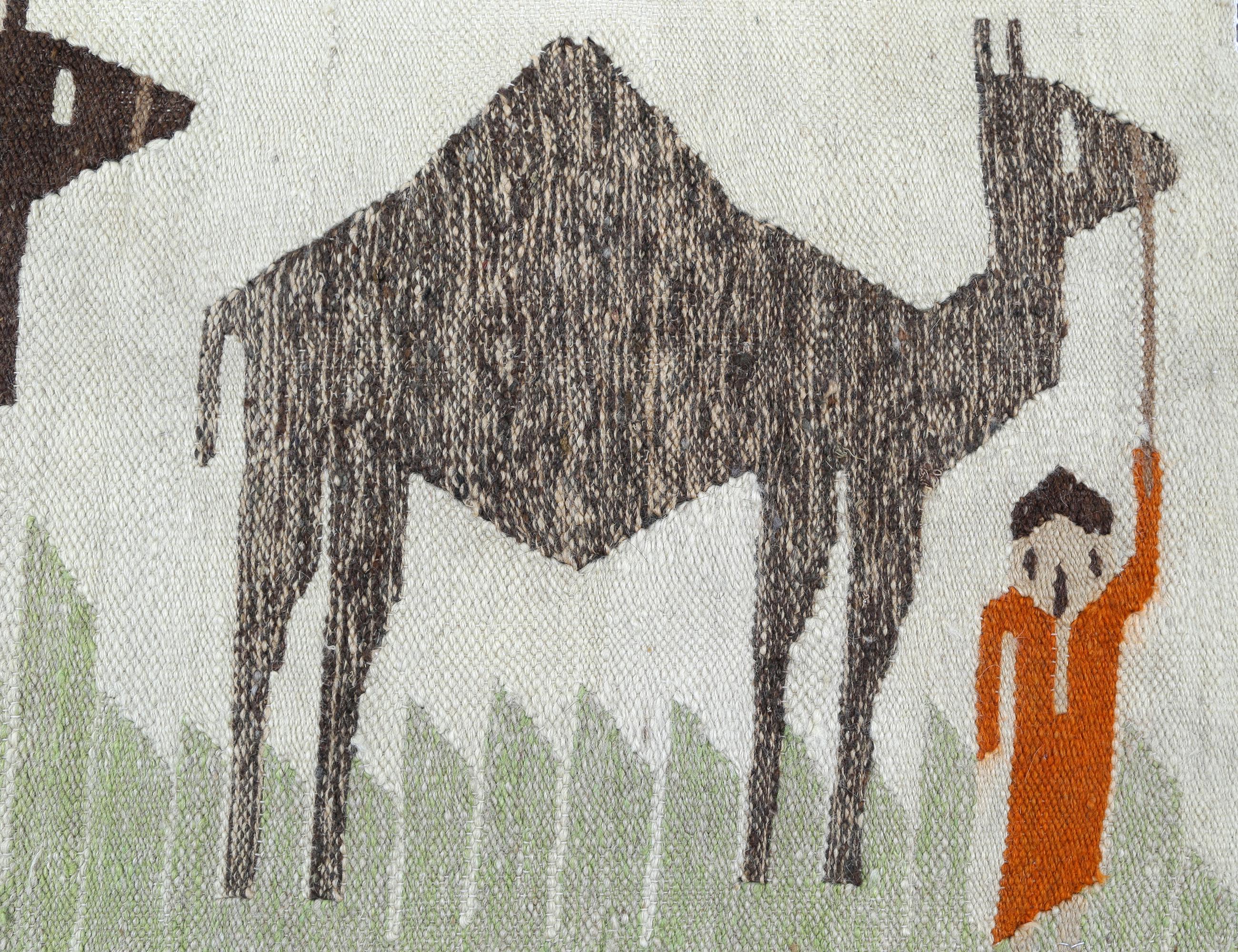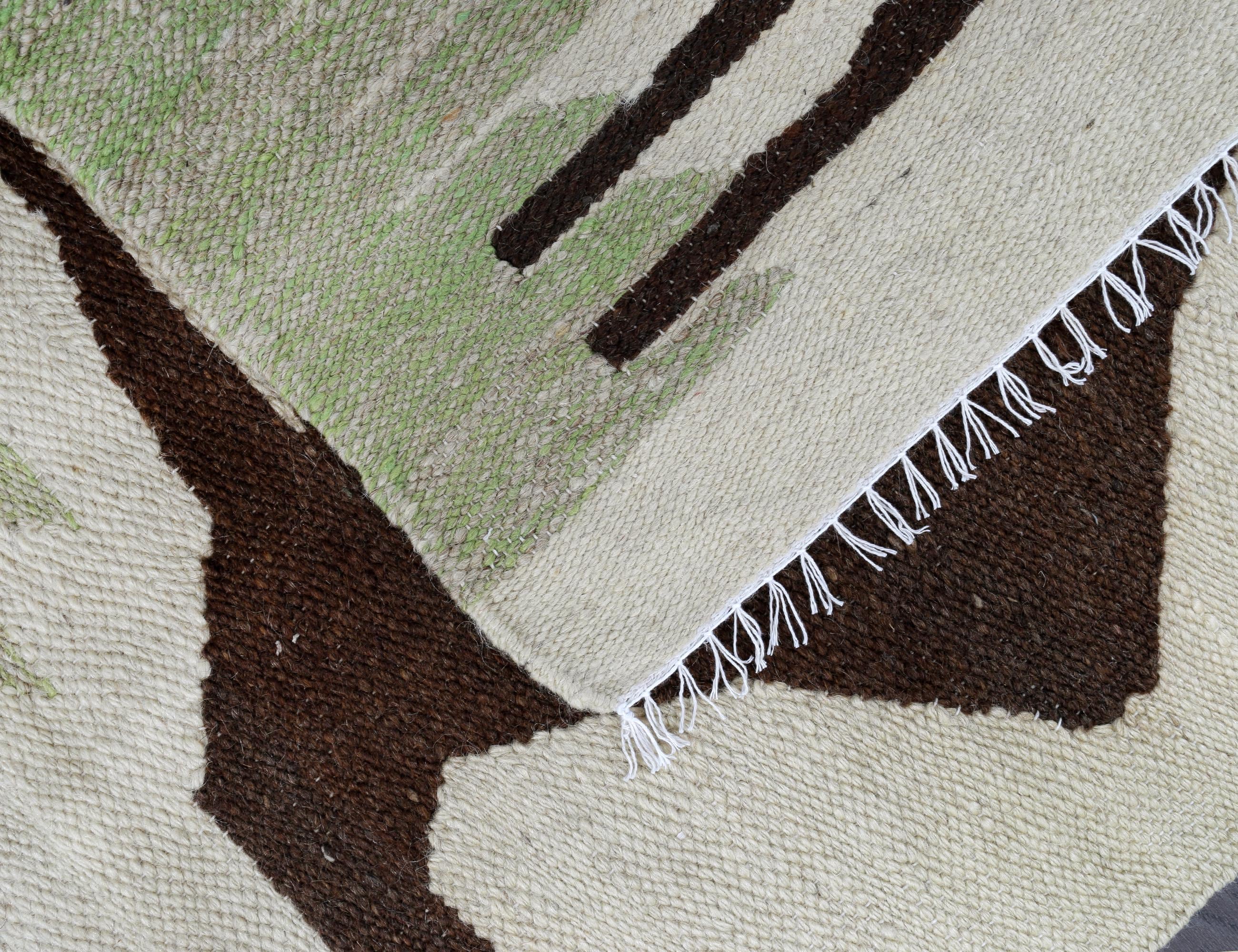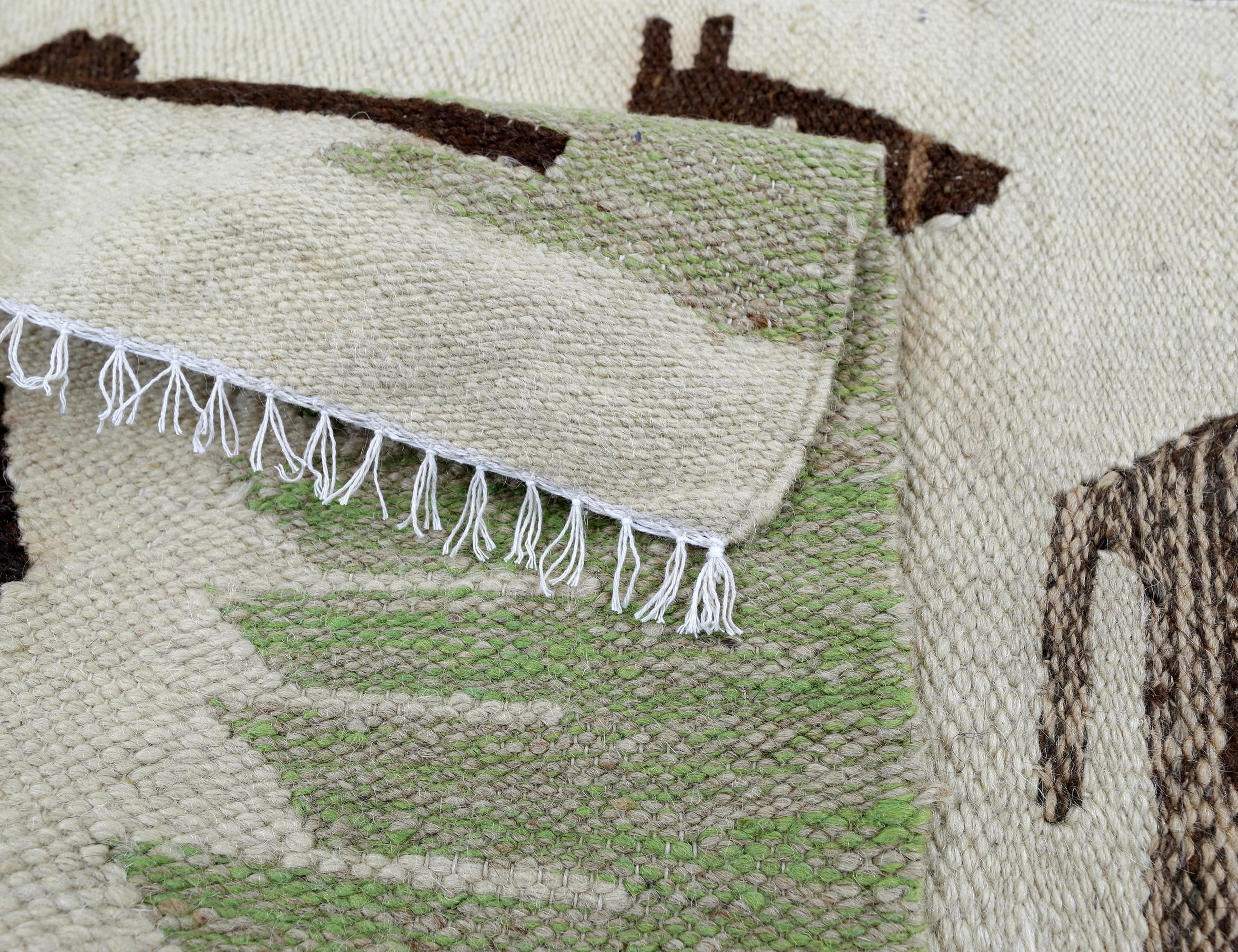






Anatolian Kilim Rug: Camel Caravan Folk Art Wool Wall Hanging
$140.00 $350.00
This charismatic little kilim brings a whole story into your room: two stylized camels and their handler stride across a field of soft green while the ground is an inviting, hand-spun ivory. Woven by a village craftswoman in central Anatolia, it’s an authentic pictorial flatweave—perfect as a wall hanging, entry accent, or nursery textile with soul.
Visual analysis & authentication
Weaving tradition: Flatweave kilim using slit-tapestry technique. The color areas meet in clean vertical “slits,” typical of Anatolian tapestry work.
Knot structure: None—this is a weft-faced flatweave (no pile), so knots are not used.
Regional origin: The simplified camel and handler silhouettes, cotton warps, and pale green/ivory ground with undyed brown camels are consistent with Anatolian village pictorial kilims made for home decoration, mid-20th century onward.
Age: ca. 1970s–1990s. The handle, cotton warp, and cheerful folk-art graphic point to this period.
Maker’s marks: No written signature; the subject itself (caravan scene) is a classic regional folk theme.
Surface & density: Firm, medium-thick tapestry; compact wefting with crisp motif edges.
Materials: Hand-spun wool wefts on cotton warps. Browns appear to be undyed natural fleece; soft green and orange likely low-impact or natural dyes of the period. Mild abrash (tone variation) is visible—an authenticity hallmark.
Pattern & cultural context
Motifs: Two camels with a camel-driver in an orange robe; grass blades rendered as stepped triangles. In nomadic iconography, camels symbolize travel, trade, endurance, and blessing for safe journeys.
Naqsha / layout: A single pictorial panel across an ivory field—balanced, left-to-right narrative composition typical of folk pictorials meant for wall display.
Borders: No formal borders; the design breathes to the edges—common in small Anatolian pictorials. Twined side cords finish the edges.
Weaving signature: Slit joins, cotton fringe, heathered camel wool, and the naive, charming figure are hallmarks of Anatolian village pieces.
Symbols: The raised staff and forward-moving animals read as protection and guidance—a wish for steady livelihood.
Technical specifications
Dimensions: 104 cm x 51 cm (approx. 3’5” x 1’8”).
Weave: Hand-woven slit-tapestry kilim (flatweave).
Foundation: Cotton warps; wool wefts.
Pile height: Flat (0–2 mm).
Density: Tight weft-faced tapestry; (knot count not applicable).
Age: c. 1970–1990.
Colors: Ivory, heathered browns, soft leaf-green, and a pop of orange.
Time to weave: ~1–2 weeks for an experienced village weaver.
Features at a glance
Authentic Anatolian pictorial kilim (not machine-made)
Camel caravan folk art—warm, story-rich subject
Natural wool on cotton; durable, breathable textile
Versatile wall hanging, small runner, or bench cover
Sustainable vintage with beautiful hand-spun abrash
Care instructions
Vacuum lightly with a brushless head or shake out.
For walls, use a textile hanger or Velcro strip sewn to a twill tape.
Spot clean with cool water and a drop of wool soap; blot, don’t rub.
Avoid prolonged direct sun to preserve color.
For deeper care, entrust to a rug specialist experienced with flatweaves.
Bring home a slice of nomadic storytelling—this cheerful camel caravan will keep your space feeling warm, welcoming, and wonderfully human. Add to cart with confidence, and feel free to message me for a complimentary hanging guide!
Shipping from Pakistan
Processing time
5-7 business days
Customs and import taxes
Buyers are responsible for any customs and import taxes that may apply. I'm not responsible for delays due to customs.
Payment Options
Returns & Exchanges
I don't accept returns, exchanges, or cancellations
But please contact me if you have any problems with your order.
